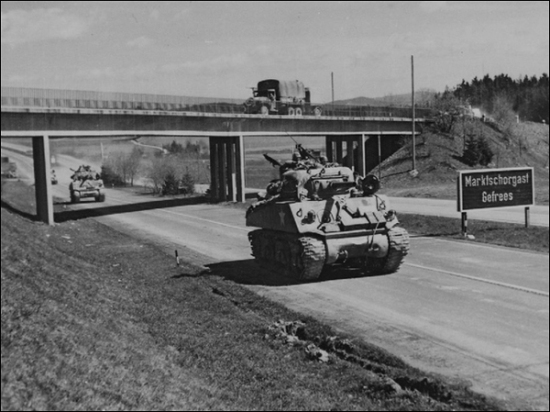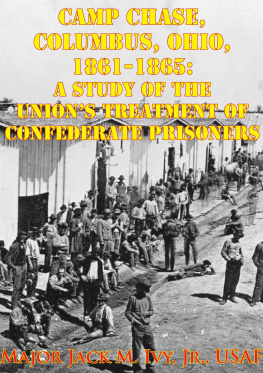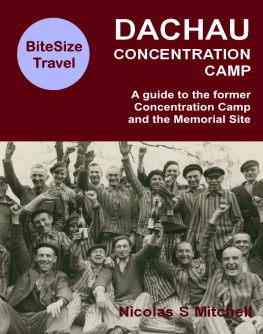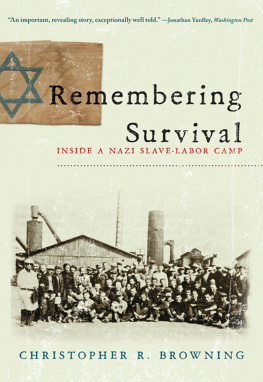All maps courtesy of Flint Whitlock.
Hardcover first published in 2005 by Westview Press, A Member of the Perseus Books Group
Paperback first published in 2006 by Basic Books, A Member of the Perseus Books Group
All rights reserved. Printed in the United States of America. No part of this book may be reproduced in any manner whatsoever without written permission except in the case of brief quotations embodied in critical articles and reviews.
Books published by Basic Books are available at special discounts for bulk purchases in the United States by corporations, institutions, and other organizations. For more information, please contact the Special Markets Department at the Perseus Books Group, 11 Cambridge Center, Cambridge MA 02142; or call (617) 252-5298 or (800) 255-1514; or e-mail
Cataloging-in-Publication data is available from the Library of Congress.
HC: ISBN-13 978-0-8133-4288-7; ISBN 0-8133-4288-0
PBK: ISBN-13 978-0-465-09115-7; 0-456-09115-6
eBook ISBN: 9780786736645
ACKNOWLEDGMENTS
MANY PEOPLE DESERVE credit for helping me tell this story, which had gone virtually untold for half a century. First and foremost, the late filmmaker Charles Guggenheim must be acknowledged, for it was his documentary, broadcast over PBS stations on Memorial Day weekend, 2003, that first made me (and millions of others, Im sure) aware of this incredible tale.
The next person needing to be thanked is Mel Rappaport, of Douglaston, New Yorka World War II veteran, a liberator of Buchenwald, and a person with very good connections. It was he who first put me in contact with some of the survivors, who then introduced me to others.
I am deeply grateful to the surviving veterans of Berga and Stalag IX-B who allowed me to interview them and told me their often painful stories. Without their willingness to share, the unspeakable things that went on in these terrible places may have passed into obscurity, dismissed as fantasy simply because the reality is so horrific and unbelievable.
Once I had decided to visit the locales written about in these pages, one person provided immeasurable assistance: Frau Sabine Richter, Berga-an-der-Elsters finance director. It would have been virtually impossible to find the relevant sites in Berga without her generous assistance. She devoted many hours to escorting me to the sites of the camps and the sealed-up tunnels, and to answering my endless stream of questions. I am also indebted to the current mayor of Berga, Stephan Bttner, for his kindnesses.
Then, in no particular order of importance (for they are all important) are Will Mahoney of the Modern Military Records Branch of the National Archives II in College Park, MD; Dr. Mitchell Bard, author of Forgotten Victims; Helen Fowler, who lent me her late husbands memoirs; the operators of the website www.LoneSentry.com; Dr. Patricia Wadley, national historian of the American Ex-POW organization; Peter House, Jr., for his fathers memoirs; Barbara Geisler; and my good friend Dr. Richard Sommers and the staff of the U.S. Army Military History Institute in Carlisle, PA. I thank my agent, Jody Rein, and my editor at Westview Press, Steve Catalano, for their keen insights and unflagging desires to see this project through.
Last but certainly not least, my wife, Dr. Mary Ann Watson, and the members of her Denver book club, also deserve recognition for their careful reading of the rough manuscript and their thoughtful comments. To them and everyone else involved in this endeavor, I humbly offer my deepest appreciation.
Flint Whitlock
PROLOGUE
A LONG FILE of olive-drab American tanks, the vanguard of the 11th Armored Divisions Task Force Wingard, rumbled southward across eastern Bavaria along the Czechoslovak border. The April air was alive with a wild mixture of fragrances: engine exhaust, burning villages, torn-up earth, new spring growth, decomposing corpses, and victory.
Riding high in the turret of a well-worn, thirty-three-ton M4 Sherman tank was a sergeant whose name has been lost to history. Like the battle-scarred tank, the sergeant had seen plenty of combat since the 11th Armored Division first ran into the enemy in Belgium at the end of December 1944. Then came pitched battles at Herzfeld, Leidenborn, Sengerich, Roscheid, Es-chfeld, Reiff, Ormont, Lissigen, Kelberg, Andernach on the Rhine, Worms, Hanau, Fulda, Gelnhausen, and so many other towns that they all began to blur into an indistinct, amorphous mass. Then Bayreuth fell on 14 April, the big German armored training camp at Grafenwhr on 19 April, and the city of Weiden on 21 April.
The last couple of days, the going had gotten a little easier. Instead of bullets and tank-busting panzerfaust rounds flying in deadly profusion from the windows of every town and village they approached, the Thunderbolts of the 11th Armored were now greeted by silent white bedsheets fluttering from every window, a sign that the Germansat least the civilian townsfolkhad had enough of war and were finally admitting defeat. The German army, if one could even call it an army, was retreating faster than the Americans were advancing.

Sherman tanks of the 11th Armored Division roll down an autobahn in eastern Germany, April 1945. (Courtesy National Archives)
Heading toward the multi-spired Bavarian city of Cham, Task Force Wingard suddenly sped up and struck out for the village of Rtz. The sergeant in the lead tank looked across a fresh-green expanse of farm fields and saw a most unusual sight. Up ahead, the tank commander could make out what appeared to be a couple hundred stick figures, some of whom began waving their scarecrow-like arms at him. He ordered the driver to halt and raised his binoculars for a closer look. Strange, he must have thought; the stick figures appeared to be wearing the same mustard-colored wool uniform that he wore, except that their uniforms were torn and stained and covered with patches of mud. Many of the stick figures were also long-haired and some were bearded. If they were soldiers, he thought, they certainly looked like no soldiers he had ever seen.
One of the stick figures staggered toward him, waving its arms, a ghoulish grin spreading across its emaciated, unshaven face, tears streaming into hollows that were once its cheeks. Who was this sepulchral figure? The sergeant wanted to know.
The tanker put his hand on the grip of his holstered forty-five-caliber pistol, unsure of what was happening, of what to do. As the figure drew closer, the sergeant could hear wordsunbelievable wordsrasping from the gaping hole that was its mouth: Dont shoot! Were Americans!














